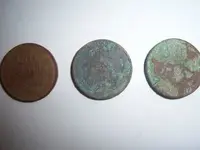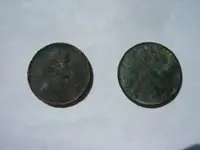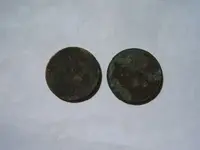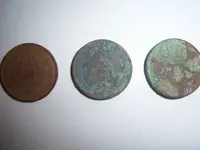You are using an out of date browser. It may not display this or other websites correctly.
You should upgrade or use an alternative browser.
You should upgrade or use an alternative browser.
Peroxide bath, no luck oh well.
- Thread starter jraven
- Start date
Peroxide is exactly what you don't want to use! It is an oxidizer.
If you want to just clean the coin, dish washing soap and a tooth brush works good. If you want to remove the oxidation, use an alkaline cleaner like Bam.
If you want to just clean the coin, dish washing soap and a tooth brush works good. If you want to remove the oxidation, use an alkaline cleaner like Bam.
Goes4ever
Silver Member
- Joined
- Jan 30, 2008
- Messages
- 4,948
- Reaction score
- 2,325
- Golden Thread
- 0
- Location
- NorthWest Ohio
- 🏆 Honorable Mentions:
- 1
- Detector(s) used
- Minelab E-Trac, Equinox 600, and Tesorso compadre
- Primary Interest:
- All Treasure Hunting
I use peroxide on all my wheats it cleans them up great, not sure what you did wrong?
BuckleBoy
Platinum Member
- Joined
- Jun 12, 2006
- Messages
- 18,132
- Reaction score
- 9,701
- Golden Thread
- 4
- Location
- Moonlight and Magnolias
- 🥇 Banner finds
- 4
- 🏆 Honorable Mentions:
- 2
- Detector(s) used
- Fisher F75, Whites DualField PI, Fisher 1266-X and Tesoro Silver uMax
- Primary Interest:
- All Treasure Hunting
Goes4ever said:I use peroxide on all my wheats it cleans them up great, not sure what you did wrong?
Ditto.
lgadbois,
Do you have a before and after photo of your cleaning method with "Bam"?
ashleysflyr
Hero Member
BuckleBoy said:Goes4ever said:I use peroxide on all my wheats it cleans them up great, not sure what you did wrong?
Ditto.
lgadbois,
Do you have a before and after photo of your cleaning method with "Bam"?
I would like to see as well...
~Tom
Don in SJ
Silver Member
- Joined
- May 20, 2005
- Messages
- 4,937
- Reaction score
- 852
- Golden Thread
- 0
- Detector(s) used
- MINELAB SE Pro
- Primary Interest:
- All Treasure Hunting
Peroxide works just fine on all copper/brass relics in removing encrusted DIRT, it does not really remove the blue/green corrosive growths, only if the blue/green is a light coating, not raised bumps, nor does it remove patina, patina only comes off if the coin is corroded beneath the detail, sort of like exfoliated type of corrosion.
Following all cleaned using peroxide, not all my best samples, a good overview of some of the results. All are usually soaked afterwards in distilled water for a few hours, then dried thoroughly and then coated with either Blue Ribbon Coin conditioner or wax.
Don
Following all cleaned using peroxide, not all my best samples, a good overview of some of the results. All are usually soaked afterwards in distilled water for a few hours, then dried thoroughly and then coated with either Blue Ribbon Coin conditioner or wax.
Don
Attachments
-
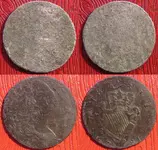 1781KGIII IrishHalfpennyDBLstruck2.webp91.3 KB · Views: 378
1781KGIII IrishHalfpennyDBLstruck2.webp91.3 KB · Views: 378 -
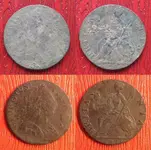 1775KingGeorgeIIISite217.webp142.9 KB · Views: 388
1775KingGeorgeIIISite217.webp142.9 KB · Views: 388 -
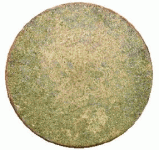 tombacIrisView.gif87.2 KB · Views: 354
tombacIrisView.gif87.2 KB · Views: 354 -
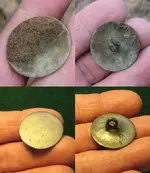 TombacBefAft.webp43.8 KB · Views: 389
TombacBefAft.webp43.8 KB · Views: 389 -
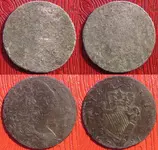 1781KGIII IrishHalfpennyDBLstruck2.webp91.3 KB · Views: 374
1781KGIII IrishHalfpennyDBLstruck2.webp91.3 KB · Views: 374 -
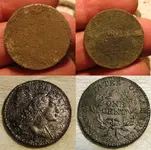 1794S55.webp145.9 KB · Views: 373
1794S55.webp145.9 KB · Views: 373 -
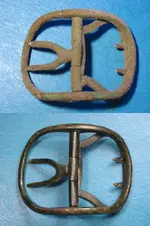 ShoeBuckleBefAft.webp70.3 KB · Views: 361
ShoeBuckleBefAft.webp70.3 KB · Views: 361 -
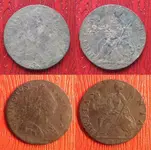 1775KingGeorgeIIISite217.webp142.9 KB · Views: 374
1775KingGeorgeIIISite217.webp142.9 KB · Views: 374 -
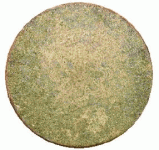 tombacIrisView.gif87.2 KB · Views: 357
tombacIrisView.gif87.2 KB · Views: 357 -
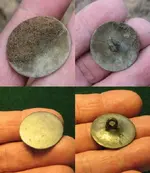 TombacBefAft.webp43.8 KB · Views: 387
TombacBefAft.webp43.8 KB · Views: 387 -
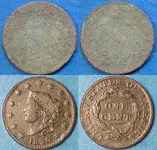 1820BeforeAfter.webp130.7 KB · Views: 387
1820BeforeAfter.webp130.7 KB · Views: 387 -
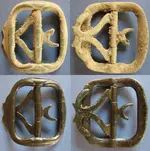 Knee buckleBefAft2.webp103.2 KB · Views: 357
Knee buckleBefAft2.webp103.2 KB · Views: 357
Southern_Boy
Hero Member
- Joined
- Feb 2, 2007
- Messages
- 533
- Reaction score
- 4
- Golden Thread
- 0
- Location
- New York State..Vestal, NY
- Detector(s) used
- Fischer CZ-3D
Wow...it did a number on them.
BuckleBoy
Platinum Member
- Joined
- Jun 12, 2006
- Messages
- 18,132
- Reaction score
- 9,701
- Golden Thread
- 4
- Location
- Moonlight and Magnolias
- 🥇 Banner finds
- 4
- 🏆 Honorable Mentions:
- 2
- Detector(s) used
- Fisher F75, Whites DualField PI, Fisher 1266-X and Tesoro Silver uMax
- Primary Interest:
- All Treasure Hunting
Southern_Boy said:Wow...it did a number on them.
Your photo of the flesh-eating child scares me.
mastereagle22
Silver Member
- Joined
- May 15, 2007
- Messages
- 4,909
- Reaction score
- 31
- Golden Thread
- 0
- Location
- Southeast Missouri
- Detector(s) used
- E-trac, Explorer II, Xterra30, Whites Prizm IV
I use the potatoe method with all my wheats and indian heads that I have found. It works great!!
Tensas
Jr. Member
- Joined
- Sep 23, 2007
- Messages
- 86
- Reaction score
- 1
- Golden Thread
- 0
- Location
- Waterproof, LA
- Detector(s) used
- Tesoro, Tejon
M.E. what is the potatoe method?
Detectingfreak
Gold Member
- Joined
- Apr 26, 2006
- Messages
- 5,736
- Reaction score
- 21
- Golden Thread
- 0
- Location
- Bellevue, WA
- Detector(s) used
- Minelab Explorer SE, Tesoro TigerShark
That sucks! Maybe you should be more carefull! 



mastereagle22
Silver Member
- Joined
- May 15, 2007
- Messages
- 4,909
- Reaction score
- 31
- Golden Thread
- 0
- Location
- Southeast Missouri
- Detector(s) used
- E-trac, Explorer II, Xterra30, Whites Prizm IV
The potato method is SIMPLE. Buy a potato or two and keep them around. Then when you get a cruddy coin you cut a piece of the potato off big enough to put the coin in. Leave it in for a few hours and you will notice the potato gets black around where the coin is. Remove and rinse and hit lightly with a toothbrush to brush the stuff off.
For a really cruddy coin it may take 24 hours. I don't leave my coins in for longer than 12 hours at a time. Do NOT reuse the potato just toss it and get a new piece each time. This works great!
Then I usually put a little baking soda on the coin and rub with the toothbrush again to neutralize any residual and wash with water. Dry the coin and you are done. The only drawback I have found with this method is that it will leave your penny or coin looking dull. So I use a little Renaissance Wax to shine it up just a little.
For a really cruddy coin it may take 24 hours. I don't leave my coins in for longer than 12 hours at a time. Do NOT reuse the potato just toss it and get a new piece each time. This works great!
Then I usually put a little baking soda on the coin and rub with the toothbrush again to neutralize any residual and wash with water. Dry the coin and you are done. The only drawback I have found with this method is that it will leave your penny or coin looking dull. So I use a little Renaissance Wax to shine it up just a little.
Similar threads
- Replies
- 16
- Views
- 980
Users who are viewing this thread
Total: 1 (members: 0, guests: 1)

 It was fun to watch em bubble tho!
It was fun to watch em bubble tho!

